Papers by Zoi-Heleni Michalopoulou
The Journal of the Acoustical Society of America, 2006
Traditional matched field processing is typically employed for localization of a source with unkn... more Traditional matched field processing is typically employed for localization of a source with unknown amplitude and phase at transmission. The spectral information of the source is estimated via maximum likelihood and is used for localization with the Bartlett processor. Maximum a posteriori estimation of the spectrum of the source is here proposed along with the estimation of source location and noise variance, where the joint posterior probability distribution of all parameters is computed with Gibbs sampling. It is shown that the proposed method has a higher probability of correct localization than the traditional approach.
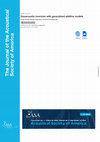
The Journal of the Acoustical Society of America, 2019
Geoacoustic parameter estimation is presented as a non-linear regression problem where prediction... more Geoacoustic parameter estimation is presented as a non-linear regression problem where prediction is performed using generalized additive models applied to features extracted from broadband acoustic time-series in a machine learning framework. Qualitatively, it can be seen that signals that have propagated in different environments have distinct structures: in some cases, a single mode is identified, in others, multiple modes can be seen; signals can also be distinguished by different energy levels. Features that are employed here comprise relative amplitudes of distinct peaks in the signals, signal kurtosis, signal strength, decay of the time-series with time, and time difference between distinct peaks of the received signals. Functions are sought that relate sediment sound speed and attenuation to these features. A multivariate generalized additive model is proposed using smoothing splines for the nonlinear regression problem of predicting geoacoustic properties using the features...
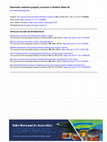
The Journal of the Acoustical Society of America, 2017
Received time-series at a short distance from the source allow the identification of distinct pat... more Received time-series at a short distance from the source allow the identification of distinct paths; four of these are direct, surface and bottom reflections, and sediment reflection. In this work, a Gibbs sampling method is used for the estimation of the arrival times of these paths and the corresponding probability density functions. The arrival times for the first three paths are then employed along with linearization for the estimation of source range and depth, water column depth, and sound speed in the water. Propagating densities of arrival times through the linearized inverse problem, densities are also obtained for the above parameters, providing maximum a posteriori estimates. These estimates are employed to calculate densities and point estimates of sediment sound speed and thickness using a non-linear, grid-based model. Density computation is an important aspect of this work, because those densities express the uncertainty in the inversion for sediment properties.

The Journal of the Acoustical Society of America, 2016
The dispersion pattern of a received signal is critical for understanding physical properties of ... more The dispersion pattern of a received signal is critical for understanding physical properties of the propagation medium. The objective of this work is to estimate accurately sediment sound speed using modal arrival times obtained from dispersion curves extracted via time-frequency analysis of acoustic signals. A particle filter is used that estimates probability density functions of modal frequencies arriving at specific times. Employing this information, probability density functions of arrival times for modal frequencies are constructed. Samples of arrival time differences are then obtained and are propagated backwards through an inverse acoustic model. As a result, probability density functions of sediment sound speed are estimated. Maximum a posteriori estimates indicate that inversion is successful. It is also demonstrated that multiple frequency processing offers an advantage over inversion at a single frequency, producing results with reduced variance.

The Journal of the Acoustical Society of America, 2018
It has been previously shown using synthetic data that dispersion tracking with particle filterin... more It has been previously shown using synthetic data that dispersion tracking with particle filtering can be used for sediment sound speed inversion. Here, dispersion tracking is performed with data collected in the Gulf of Mexico for sediment sound speed and thickness and water column depth estimation. In this experiment, sound that propagates a long distance from the source allows the identification of dispersion curves reflecting the different group velocities of modal frequencies within and across modes. Although the data are noisy, dispersion curves are tracked with sequential filtering and used for inversion. Probability density functions of the three unknown parameters are obtained. Water column depth is estimated with little uncertainty. The estimated sound speed is representative of sandy sediment and the sediment thickness matches to a large extent prior knowledge.
The Journal of the Acoustical Society of America, 2017
Sequential Bayesian filtering methods have been previously used in dispersion curve tracking for ... more Sequential Bayesian filtering methods have been previously used in dispersion curve tracking for long range sound propagation in the ocean. Modal frequency probability density functions were extracted for sound speed inversion. Here, we calculate modal arrival time densities, instead, and employ them for inversion for sediment sound speed and thickness and water column depth. Bayesian mode identification is performed to this end. We investigate two methods for describing the statistical errors in power spectra, which we use in the arrival time density calculation using normal modes. We then link these densities to the parameters of interest. The approaches are tested with synthetic data as well as data collected in the Gulf of Mexico. [Work supported by ONR.]

Journal of the Acoustical Society of America, 2016
The goal of this work is to improve our knowledge of the ocean medium using physics of sound prop... more The goal of this work is to improve our knowledge of the ocean medium using physics of sound propagation and statistical signal processing. Two of the approaches we discuss are based on global and local optimization combined with sequential filtering. A third one falls under the category of direct (“exact”) methods. The first two approaches are based on the extraction and the association between paths/modes and detected arrivals and also produce posterior probability density functions, characterizing the uncertainty structure of modal/multipath arrivals. These are then propagated backwards through an acoustic model for posterior probability density function calculation of environmental parameters. A third method extends Stickler’s exact inverse approach, employing measurements of a reflection coefficient at low frequencies to obtain the sediment sound speed profile. We develop an approximation based on interpolation and a regularization approach. The former improves on results of a ...

The Journal of the Acoustical Society of America, 2013
A fast approach for solving the inverse problem of estimating sediment sound-speed based on the D... more A fast approach for solving the inverse problem of estimating sediment sound-speed based on the Deift-Trubowitz trace formula is being investigated in our research. Under certain assumptions, this algorithm can recover the sound speed profile in the seabed using pressure field measurements in the water column at low frequencies. The inversion algorithm, employing a modified Born approximation, works well with synthetic data. Results are compared to those of previously developed methods and demonstrate improvement especially at sharp changes in sound speed. Although the method is stable and effective with noise-free data, problems arise when noise is considered. In our work, we develop regularization methods to remedy this problem. Finally, we recognize that some assumptions necessary for this algorithm to work may not be realistic; we discuss ways to relax these limitations. [Work supported by ONR.]
The Journal of the Acoustical Society of America, 2012
In this work, a new inverse method for estimating sediment sound-speed profiles is investigated. ... more In this work, a new inverse method for estimating sediment sound-speed profiles is investigated. Stickler and Deift derived a trace formula for recovering a seiment sound-speed profile by simply using a reflection coefficient at very low frequencies. The method may be sensitive to noise and also involves computationally cumbersome calculations. In our approach, we first design a linear approximation for the trace formula based on the Born approximation, in order to reduce the computational cost. The stability of the modified inverse algorithm is then tested with synthetic noisy data. Finally, we look into ways for relaxing the limiting assumptions of the approach. [Work supported by ONR and the NSF CSUMS program.]

The Journal of the Acoustical Society of America, 2013
Iterative and sequential Bayesian filtering methods have been previously used in dispersion track... more Iterative and sequential Bayesian filtering methods have been previously used in dispersion tracking for long range sound propagation in oceanic environments. The methods rely on accurate modeling of (i) the acoustic field in the frequency domain as a function of time and (ii) the statistical model governing the behavior of errors in the measured data. Normal distributions are typically used for the latter but may not necessarily be the most accurate models for the description of the data. We investigate alternative methods for describing the statistical errors in power spectra, which we then use for linking the extracted time-frequency information to geoacoustic inversion. Probability density functions computed for frequencies and arrival times via filtering are propagated “backwards” through sound propagation models for quantification of the uncertainty in the estimation process. [Work supported by ONR].

The Journal of the Acoustical Society of America, 2020
In this work, model-based methods are employed, along with machine learning techniques, to classi... more In this work, model-based methods are employed, along with machine learning techniques, to classify sediments in oceanic environments based on the geoacoustic properties of a two-layer seabed. Two different scenarios are investigated. First, a simple low-frequency case is set up, in which the acoustic field is modeled with normal modes. Four different hypotheses are made for seafloor sediment possibilities, and these are explored using both various machine learning techniques and a simple matched-field approach. For most noise levels, the latter has an inferior performance to the machine learning methods. Second, the high-frequency model of the scattering from a rough, two-layer seafloor is considered. Again, four different sediment possibilities are classified with machine learning. For higher accuracy, one-dimensional convolutional neural networks are employed. In both cases, the machine learning methods, both in simple and more complex formulations, lead to effective sediment cha...

The Journal of the Acoustical Society of America, 2011
Sequential model selection is demonstrated for a drifting passive fathometer case. It has been sh... more Sequential model selection is demonstrated for a drifting passive fathometer case. It has been shown that, by processing noise data at a specific array location, a reflector sequence can be extracted, consisting of a summation of sinc pulses. The center of each pulse identifies the depth of a reflector in the ocean environment at that location. Extracting the number and peak/depth locations of these pulses in the reflector sequence provides insight in the sediment structure of the medium. Collecting data in multiple ranges, a process facilitated by the drifting array, allows the study of multiple reflector sequences. Similarly to spatial time delay tracking with Bayesian filters that sample from posterior density functions, we treat sequences obtained at different ranges as data arriving sequentially into a particle filter that extracts at every range (state) the number of pulses and their corresponding depths using an observation equation. A state equation then predicts reflectors ...
JASA Express Letters
Workshop '97 data are employed for seabed classification and source range estimation. The dat... more Workshop '97 data are employed for seabed classification and source range estimation. The data are acoustic fields computed at vertically separated receivers for various ranges and different environments. Gaussian processes are applied for denoising the data and predicting the field at virtual receivers, sampling the water column densely within the array aperture. The enhanced fields are used in combination with machine learning to map the signals to one of 15 sediment-range classes (corresponding to three environments and five ranges). The classification results after using Gaussian processes for denoising are superior to those when noisy workshop data are employed.
Multipath arrivals of a signal at a receiving sensor are frequently encountered in many areas of ... more Multipath arrivals of a signal at a receiving sensor are frequently encountered in many areas of signal processing, including sonar, radar, and communication problems. In underwater acoustics, numerous approaches to source localization, geoacoustic inversion, and tomography rely on accurate multipath arrival extraction. In this work, a novel method for estimation of time delays and amplitudes of arrivals with Maximum A Posteriori (MAP) estimation is presented. MAP estimation is optimal if appropriate statistical models are selected for
Multiple source localization in underwater environments is approached within a matchedfield proce... more Multiple source localization in underwater environments is approached within a matchedfield processing framework. A Maximum a Posteriori Estimation method is proposed that estimates source location and spectral characteristics of multiple sources via Gibbs Sampling. The method facilitates localization of weak sources which are typically masked by the presence of strong interferers. A performance evaluation study based on Monte Carlo simulations shows that the proposed Maximum a Posteriori Estimation approach is superior to simple coherent matched-field interference cancellation. The proposed method is also tested on the estimation of the number of sources present, providing probability distributions in addition to point estimates for the number of sources.

Sequential filtering provides an optimal framework for estimating and updating the unknown parame... more Sequential filtering provides an optimal framework for estimating and updating the unknown parameters of a system as data become available. Despite significant progress in the general theory and implementation, sequential Bayesian filters have been sparsely applied to ocean acoustics. The foundations of sequential Bayesian filtering with emphasis on practical issues are first presented covering both Kalman and particle filter approaches. Filtering becomes a powerful estimation tool, employing prediction from previous estimates and updates stemming from physical and statistical models that relate acoustic measurements to the unknown parameters. Ocean acoustic applications are then discussed focusing on the estimation of environmental parameters evolving in time or space. The potential of particle filtering in ocean acoustics is further demonstrated through application to experimental data from the Shallow Water 2006 experiment.
JASA Express Letters, 2021
For a sparsely observed acoustic field, Gaussian processes can predict a densely sampled field on... more For a sparsely observed acoustic field, Gaussian processes can predict a densely sampled field on the array. The prediction quality depends on the choice of a kernel and a set of hyperparameters. Gaussian processes are applied to source localization in the ocean in combination with matched-field processing. Compared to conventional processing, the denser sampling of the predicted field across the array reduces the ambiguity function sidelobes. As the noise level increases, the Gaussian process-based processor has a distinctly higher probability of correct localization than conventional processing, due to both denoising and denser field prediction. V
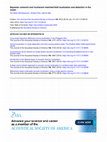
The Journal of the Acoustical Society of America, 2019
Matched-field processing is applied to source localization and detection of sound sources in the ... more Matched-field processing is applied to source localization and detection of sound sources in the ocean. The source spectrum is included in the set of unknown parameters and is estimated in the localization/detection process. Bayesian broadband (multi-tonal) incoherent and coherent processors are developed, integrating the source spectrum estimation using a Gibbs sampler and are first evaluated in source localization via point estimates and probability density functions obtained from synthetic signals. The coherent performance is superior to the incoherent one both in terms of source location estimates and density spread. The two processors are also applied to real data from the Hudson Canyon experiment. Subsequently, using Receiver Operating Characteristic (ROC) curves, the two processors are evaluated and compared in the task of joint detection and localization. The coherent detector/localization processor is superior to the incoherent one, especially as the number of frequencies increases. Joint detection and localization performance is evaluated with Localization-ROC curves. V
The long term goal of this project is to develop efficient inversion algorithms for successful es... more The long term goal of this project is to develop efficient inversion algorithms for successful estimation and detection by incorporating (fully or partially) the physics of the propagation medium. Algorithms will be designed for robust ASW localization and detection and also for geoacoustic inversion. OBJECTIVES • Achieve accurate and computationally efficient source localization by designing estimation schemes that combine acoustic field modeling and optimization approaches. 15. SUBJECT TERMS 16. SECURITY CLASSIFICATION OF: 17. LIMITATION OF ABSTRACT Same as Report (SAR) 18. NUMBER OF PAGES 7 19a. NAME OF RESPONSIBLE PERSON

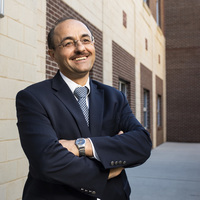




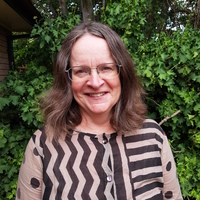
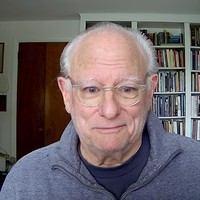
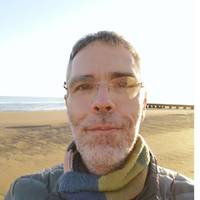

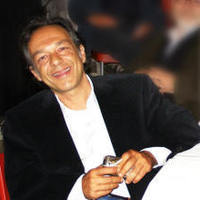
Uploads
Papers by Zoi-Heleni Michalopoulou